
If dental compliance is a concern at your practice, you're not alone. The team at Lockwillow Avenue Animal Hospital in Harrisburg, Pa., worried that clients didn't always follow their dental recommendations.

If dental compliance is a concern at your practice, you're not alone. The team at Lockwillow Avenue Animal Hospital in Harrisburg, Pa., worried that clients didn't always follow their dental recommendations.

Do I have to be nice if a client is really rude?

Don't settle for just-OK visits anymore. Use these service strategies to take your team's performance up a notch

Last week a client brought in a very sick pet and refused to treat it because of the cost. This makes me furious. What can I do?

Clients often ditch their kids in the reception area. What should we do?
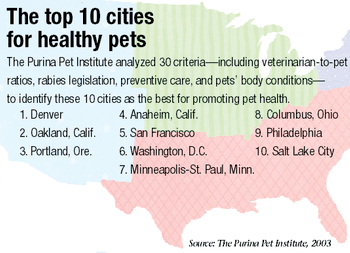
Where you choose to live affects your career opportunities, your personal happiness, and even the health of the patients you see. Does your city rank among the best?
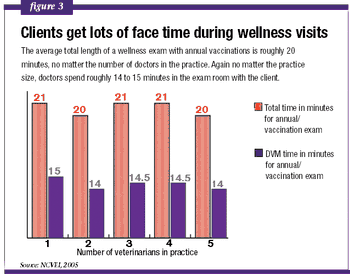
Data shows that if your clients arrive during a busy time, their average wait for check-in and check-out can hit 21 to 29 minutes during a 42- to 49-minute visit. That's almost half their time at the practice.
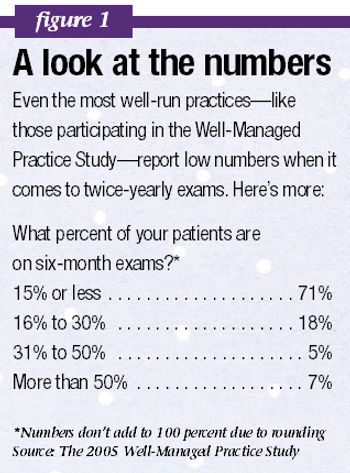
Even Well-Managed Practices aren't seeing many patients for twice-yearly exams—proof that the idea hasn't caught on yet. Use these strategies to educate your clients about the benefits.

Nearly 90 percent of practitioners say they chose veterinary medicine because they wanted to work with animals or liked science and medicine. But, clearly, a human sets up the appointment and writes the check. Here's what you need to know about your clients.
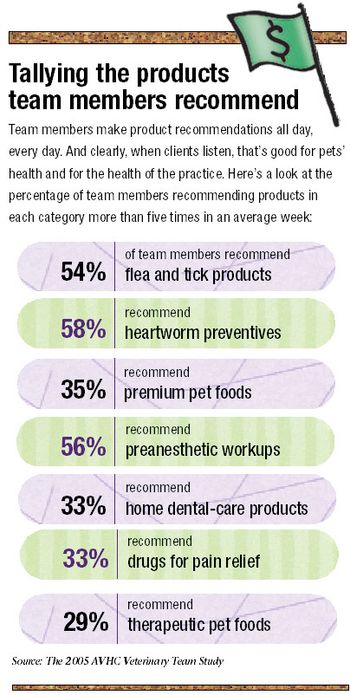
Use these strategies to harness your team members' power to drive client compliance and revenue—and improve your patients' health.
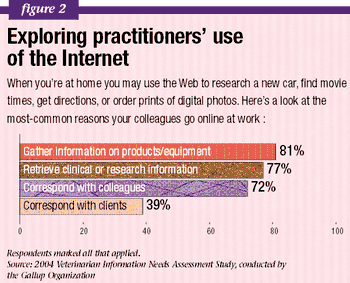
Your colleagues generally aren't making tracks to the forefront of technology. Could you benefit from adopting a higher-tech approach?

Minneapolis - 7/21/05 - The American Veterinary Medical Association (AVMA) in correlation with the World Veterinary Congress (WVC) brought 4,070 practitioners to Minneapolis.

If you're not careful, the hustle and bustle of the day could distract you from communicating your deep caring for clients' pets. To avoid this pitfall, Dr. Jason Palm, of Hiawassee Veterinary Clinic in Orlando, Fla., imagines that every pet he examines is his own.
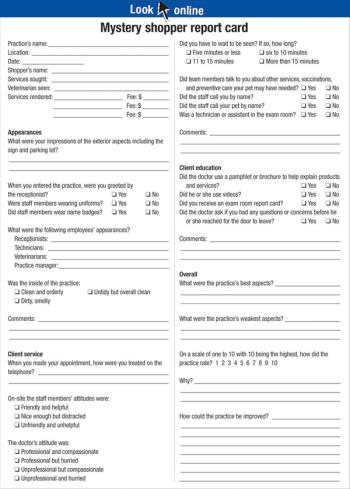
How well do you treat your clients? A mystery shopper can help you answer this question objectively.

We took in a boarder from a longtime, good client, who said the pet was a stray that he acquired from the local groomer. During our exam, we found a microchip and were able to locate and contact the original owner, who said the dog had been stolen about six weeks earlier. What are our rights and responsibilities in situations like this?
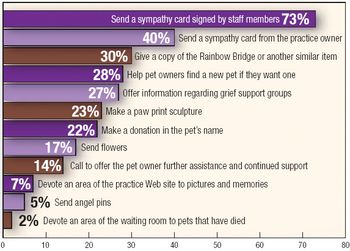
What steps does your practice team take to support clients after the euthanasia of a pet?

Inundated with signs, slogans, and sales pitches, pet owners may fail to notice a key message that you've posted right in front of them.

Do you put your best foot forward with every client, every time? These six tips can help make sure you do—and that you build the strongest possible relationships with clients.

At a recent staff meeting, I said I thought it was unprofessional for our medical and administrative support staff to chew gum on the job. I was almost laughed out of the meeting. Was I off base?
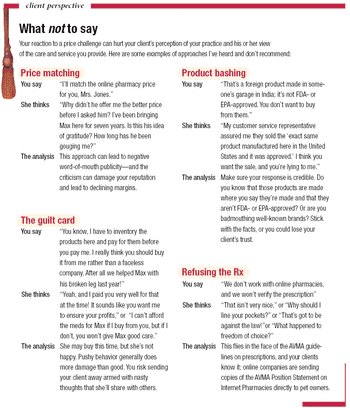
It was my job to sell pet owners on 1-800-PetMeds. But, the truth is, you're holding the best cards in this game. Just spotlight your strengths: service and value.

When a prospective client calls to ask how much I charge for a standard visit, my receptionist explains that my fees vary depending on the nature of the visit. I suspect this answer is driving away clients who are comparing fees as they search for a new veterinarian. Should my receptionist be more specific?

If an indoor cat has a low-protein, high-carbohydrate diet and nothing to do, the inevitable will ensue.

I read in a past issue about an equine practitioner who requires payment when services are rendered. I'd love to do that, but my clients expect me to bill them. How can I change my system this late in the game?

Even veterinarians sometimes overlook the power of the love and support pets provide. But now and then you may get an important reminder that a pet can lend hope and support healing—just as this veterinary student did.

A new client makes inappropriate comments to one of my employees. She asked him to stop, but he hasn't. Should I dismiss the client?
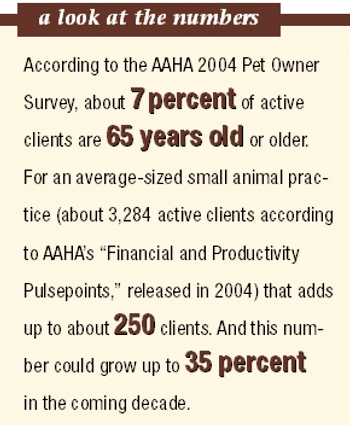
By 2010, almost 40 million Americans will be 65 years old or older. Are you prepared to meet the needs of these clients?

Acres Animal Hospital in Dartmouth, Nova Scotia, has found a way to help both the practice and its clients see green.

E-mails you send to clients to inform them of new offerings or to update them on practice happenings could be considered spam under the Controlling the Assault of Non-Solicited Pornography and Marketing Act (CAN-SPAM). To stay on the right side of the law, follow these guidelines, set forth in the CAN-SPAM Act, for commercial e-mails to existing and potential clients:

I own a feline-exclusive practice. Our prices are comparable to others in the area, except for our physical exam, which is $6 to $14 lower than most of my colleagues'. I've been thinking of raising it by $6 or $8, but several members of my team think our lower-priced office visit gets clients in the door. Once they're here, they rarely decline any additional recommended services. My team feels that without the enticing exam price, potential clients might be tempted to go elsewhere. What should I do?

You know the product or service you're recommending could help your patients. The problem is holding clients' attention long enough to explain the benefits.